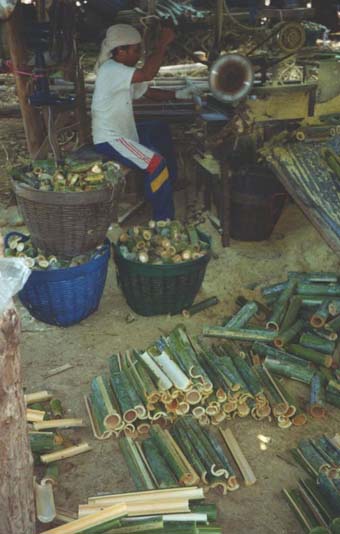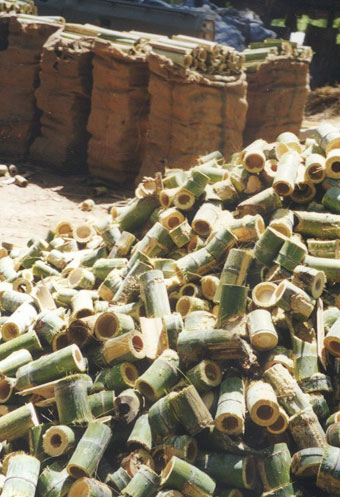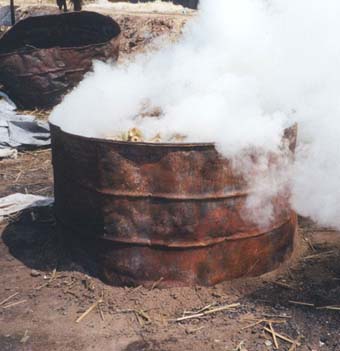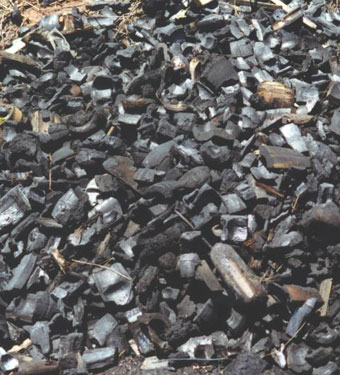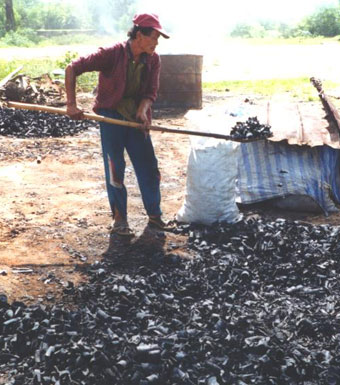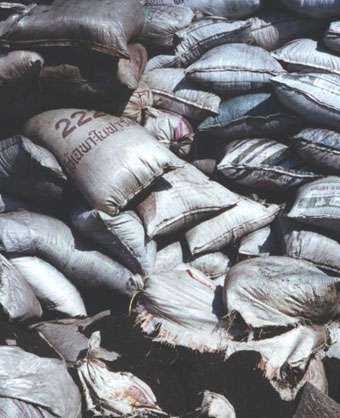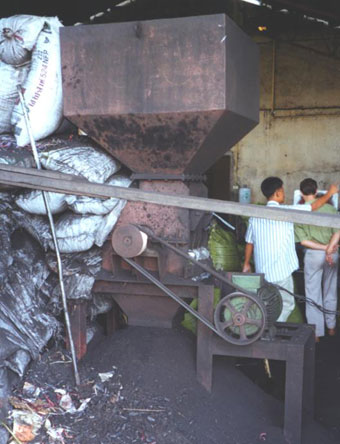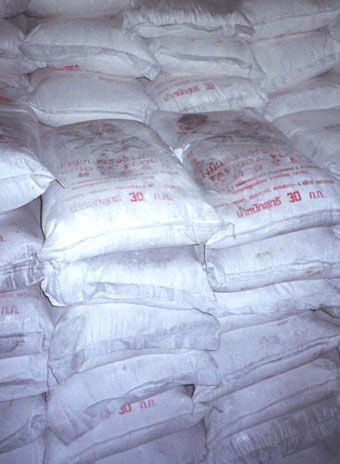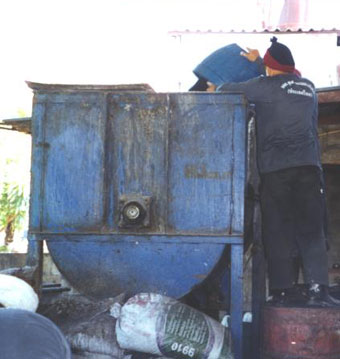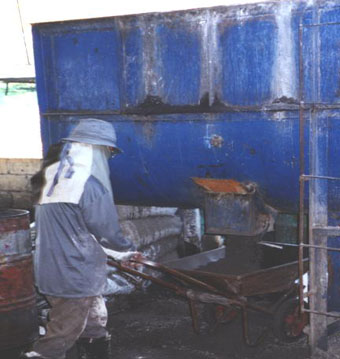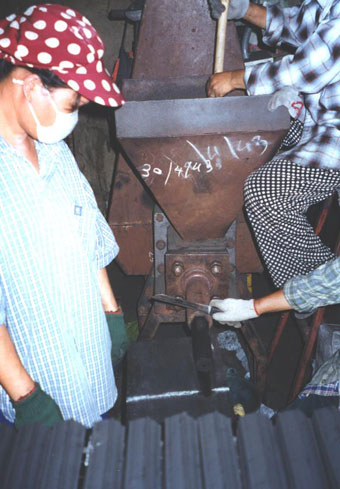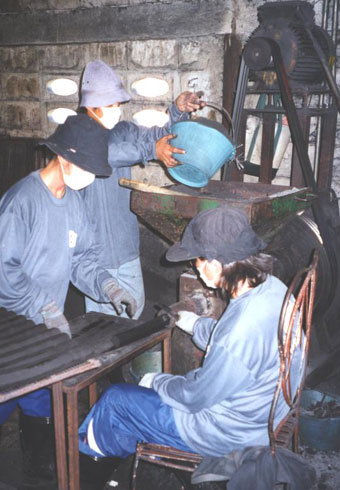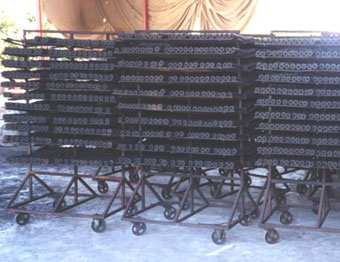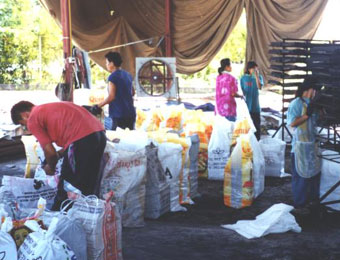Making Charcoal From Chopstick Bamboo, Lampang, Thailand
Matthew Owen August 2002
owen@africaonline.co.ke
Chardust Kenya
www.chardust.com Kenya
In Lampang in central Thailand there are 2 outfits making charcoal briquettes from bamboo waste. Or at least there were when I visited in 1999. The waste came from cottage industries making chopsticks and toothpicks
All the jointed sections of the bamboo used to be thrown away, but two briquetting companies were instead getting the farmers to carbonise this material and bring it to their factories. They paid the farmers cash by the kg.
The farmers used a rather rudimentary carbonisation system which was in fact nothing more than very large open cylinders into which the bamboo pieces were heaped and then lit. This led to low conversion efficiencies and high ash content, as well as some poorly burned lumps of bamboo. They were using 5% tapioca flour as a binder and baking the briquettes in gas ovens (something which would not be competitive in East Africa where lumpwood charcoal is very cheap). The main market for the Lampang charcoal was an NGO consortium supplying fuel to Burmese refugees. They were buying around $2 million worth per annum at that time!
By way of an update on this story, I was contacted in 2001 by a guy living in Lampang called Jan Mrskos of ENHOLCO THAILAND (enholco@cscoms.com). From he sound of it, the briquetting factories may have closed down. Here's what he told me: "I have been living in Lampang for more than 10 years, coming here as a consultant for a local power plant and later staying on my own. The factory what I am running now for wooden kitchenware was run before for production of bamboo chopsticks. That time the huge bamboo waste was not so easy to make use of. i.e, nobody from the vast surrounding was keen on it. The burning for the charcoal in a large scale with the legal Thai wages had not been viable, it could be done only in a small scale by villagers. As far as I know they had run mostly on wood sawdust or surprisingly, on charcoal dust brought in over 2,000 km from the south. One of the charcoal factory you mentioned belongs to an older gentleman, a good friend of mine who I incidentally yesterday was visiting. Currently, the production of both of these charcoal factories is down to zero because of the low market."
Matthew Owen
Chardust Ltd., Nairobi, Kenya www.chardust.com
Photos by Matthew Owen May 2000Air Jordan 1

